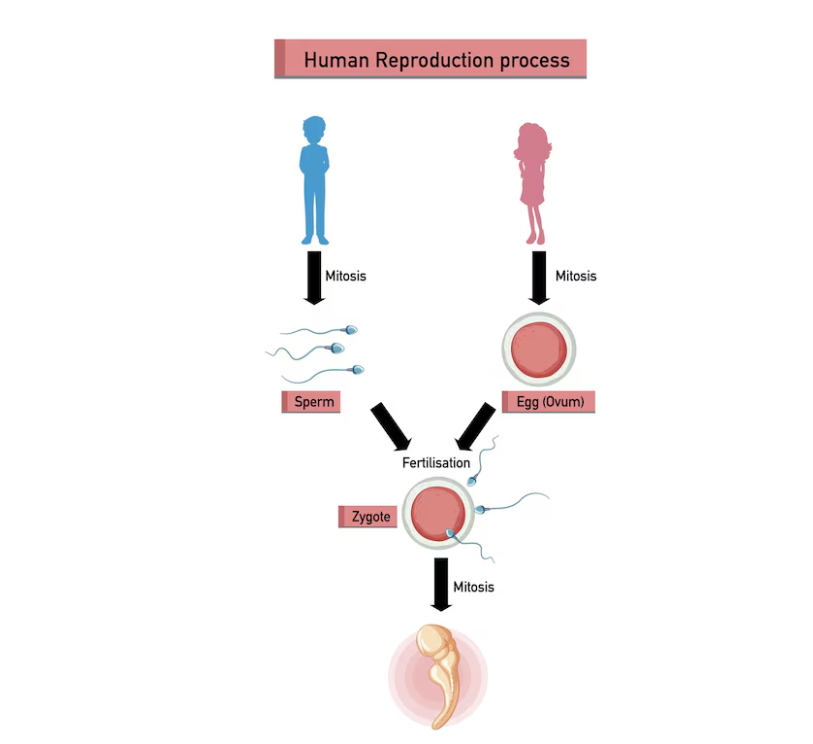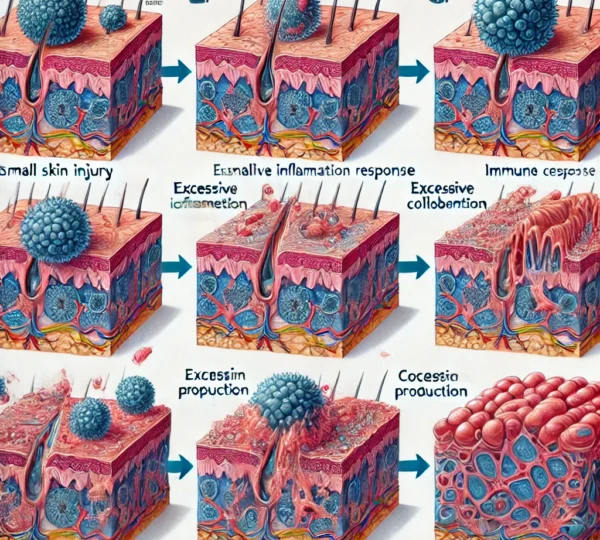
Keloid Formation: The Process and Mechanisms Involved
Have you ever wondered why some scars become large, raised bumps that don’t go away? This phenomenon, known as keloid formation, occurs when your body’s healing process produces more collagen than necessary. This excessive response leads to a scar that can grow beyond the original injury site. Keloids are more than just scars; they can cause discomfort and affect confidence. Let’s explore how keloids form, what influences their growth, and why they tend to persist.
What is Keloid Formation?
Keloid formation happens when the body’s response to healing a skin injury becomes overactive. Normally, after an injury, the body creates just enough collagen to repair the damaged tissue. But with keloids, the skin produces an excess of collagen, forming a raised scar that extends beyond the area of the initial injury. Unlike regular scars, which gradually fade and flatten, keloids can continue to grow thicker and stay raised over time.
Keloids can arise after various types of skin injuries, such as cuts, burns, piercings, acne scars, and surgical incisions. They appear more frequently in certain individuals, particularly those with darker skin tones or a family history of keloids. Let’s take a closer look at the steps involved in keloid formation.
The Process of Keloid Formation
- Skin Injury
Keloids often develop following skin injuries, ranging from small cuts to severe burns. Even minor traumas, like a scratch, can trigger keloids in certain individuals. Acne scars, piercings, and surgical incisions are also common causes. Keloids can vary in size and shape depending on the location and severity of the injury, but they typically have a raised, smooth, and shiny appearance. - Inflammatory Response
After an injury, the body’s immune system activates to protect against infection and promote healing. During this stage, blood vessels in the affected area expand, allowing immune cells to reach the injury quickly. This response supports wound healing but can also lead to prolonged inflammation in those prone to keloids. - Collagen Production
Collagen, a protein essential for wound healing, provides structure and strength to the skin. In keloid formation, collagen production intensifies. Fibroblasts—specialized cells within the skin—produce more collagen than necessary, resulting in a raised scar. - Excessive Tissue Growth
As collagen builds up, it forms dense, fibrous bundles beneath the skin’s surface, causing the scar to thicken and rise. In some cases, the scar tissue spreads beyond the original wound, creating a visible bump that becomes more prominent. - Persistent Growth
Keloids stand out due to their tendency to keep growing long after the initial wound heals. While typical scars fade with time, keloids can expand for months or even years. This ongoing growth makes keloids particularly challenging to treat, as they often resist conventional scar treatments and may return after removal.
Mechanisms Involved in Keloid Formation
While researchers continue to study keloid formation, several factors likely play a role:
- Genetics
Genetics play a significant role in keloid formation. If you have a family history of keloids, your chances of developing them increase. Certain ethnic groups, including individuals of African, Asian, and Hispanic descent, also have a higher predisposition, suggesting a strong genetic component. - Abnormal Response to Injury
In individuals who develop keloids, the skin’s response to injury is often exaggerated. This heightened response can lead to prolonged inflammation and an overactive healing process. Instead of stopping when the wound is healed, the body continues producing collagen, resulting in a keloid. - Growth Factors
Growth factors regulate cell behavior and tissue repair. In people prone to keloids, an imbalance of these factors may promote excess tissue growth. Researchers are exploring ways to modify these growth factors to prevent keloids. - Inflammatory Mediators
Certain inflammatory substances, like interleukin-6 (IL-6) and tumor necrosis factor-alpha (TNF-alpha), may trigger the inflammation and collagen buildup seen in keloids. In keloid-prone individuals, these substances may be overproduced, which further supports keloid development and makes treatment challenging.
Managing and Treating Keloids
Managing keloids can be difficult, as they often resist standard scar treatments. However, several options may help reduce their size and appearance:
- Steroid Injections: Injecting corticosteroids into the keloid can help reduce inflammation and shrink the scar.
- Laser Therapy: Laser treatments target the raised tissue, which can improve the keloid’s appearance.
- Surgical Removal: Although surgery can remove the keloid, there’s a risk it may regrow.
- Silicone Gel Sheets: Applying these sheets over the scar can help flatten and reduce the size of the keloid.
Each treatment has benefits and limitations, so it’s essential to consult with a dermatologist or specialist to find the most suitable option.
Conclusion
Keloid formation is a complex process involving inflammation, excessive collagen production, and abnormal tissue growth. While researchers continue to explore the exact causes, understanding how keloids form can guide effective treatments. For individuals prone to keloids, early intervention and preventive care can help manage and minimize these challenging scars.
To seek medical advice, always consult a Doctor. Here are our recommended EXPERTS. Click here
To read more on SKIN. Click Here



